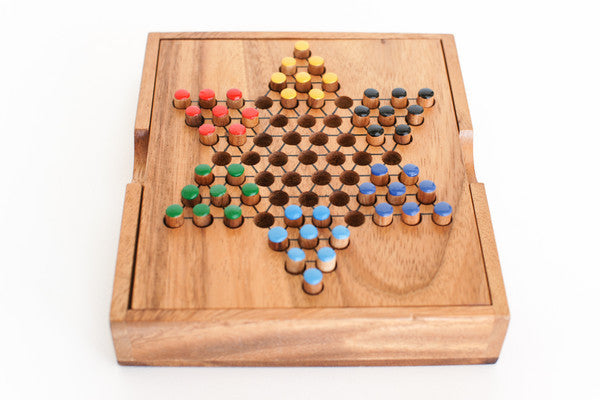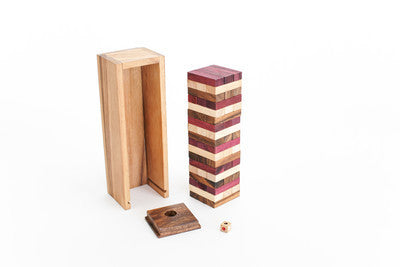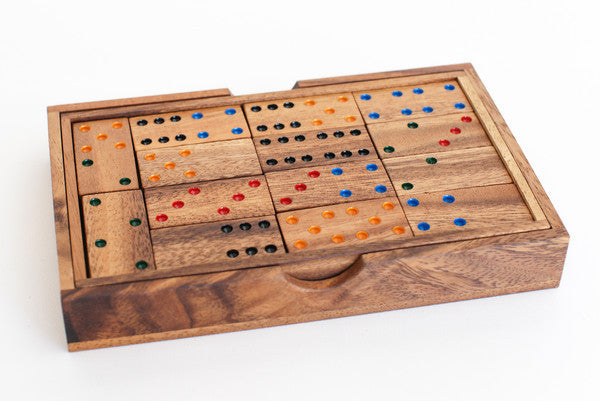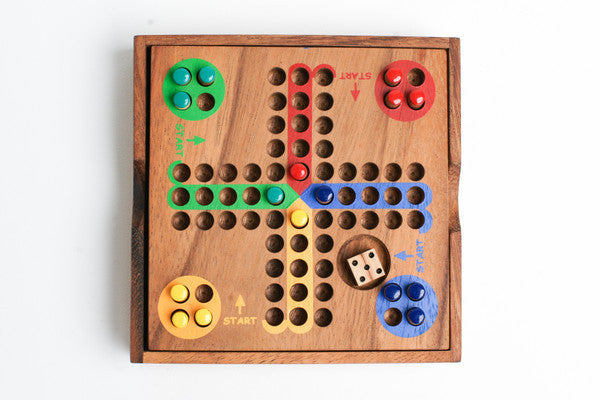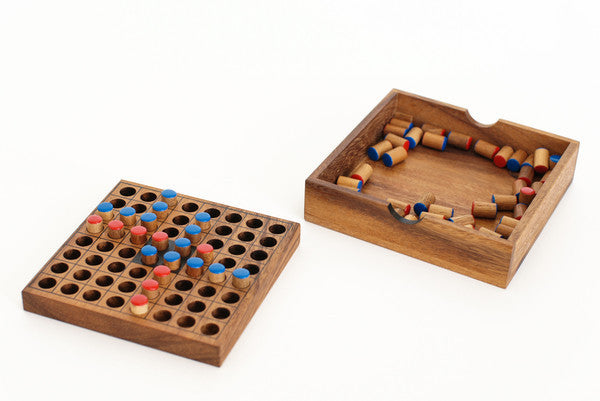Chinese Checkers - Wooden Game
Sold Out
A strategy board game which can be played by two, three, four, or six people, playing individually or with partners. The game is a modern and simplified variation of the game Halma.( invented in Germany in 1892) The rules are simple, so even young children can play
Moves can be made in any direction either moving one space into an empty slot or jumping over a peg into an empty space.
You can do several jumps (over one peg at a time) in one move. You may jump over your own or your opponents counter.
Colored Gentle Tower - Wooden Stacking Game
Sold Out
The classic stacking game can be played in 2 variations:
1. Classic- without taking in consideration the colored pieces.
2. When a color direct your move.
Each turn a player rolls the colored die and then must remove a piece of the color shown.
This game uses standard Jenga rules. Once a piece is removed it is placed on top of the stack. Pieces may only be removed from the top of the stack once there are at least 3 full rows completed over them. The game is over when the tower falls.
Domino 6 Classic - Wooden Game
$27.50
The set consists of 28 dominoes. There are 7 doubles (same number on both ends from double blank to double six) and 21 singles (different numbers on both ends or a number and a blank).
There are countless different domino games and within each game, there are many variations of play available. The purpose of this set of rules is to get you started with a few simple and popular games. Later, we'll give you reference information for finding many other games you would enjoy.
One of the wonderful things about dominoes is that anyone can learn the basics very quickly, but as you play and progress, you will find many additional levels of the game and as your experience and skills develop, you will become a more and more formidable player. Get started with these simple games and you will find yourself getting smarter every time you play. Dominoes is a good game for your brain.
Ludo - Wooden Game
Sold Out
A classic game played in many cultures with slight variation. First found in India during the 6th century in America it is known as Sorry and still played almost identically to its original design.
Players in turns, race each other around the circuit to be the first to get all of their colored pegs to the HOME-Base.
Each player picks a set of colored pegs and places them in the starting Squares of the same color.
Take turns rolling the dice, each player must roll a six before moving a piece onto the track from the starting position. During the game when a player rolls a six they get another throw.
The pegs move as to the number shown on the dice .If the ball lands on one of your opponents they are knocked off and must return to the starting position. If one of your pegs lands on top of another peg of yours - it forms a block. Your block cannot be passed by any of the opponents pieces.
When a peg completes all the way round the board, it can enter the HOME column. To land in the HOME you must throw the exact number.
The winner is the first player to get all four balls into the HOME.
Othello (Reversi) - Wooden Game
$22.69
Named after the Shakespeare play due to its traditional black and white pieces Othello was invented in England in the late 1800's. Designed as a simplified version of Go, Othello (or Reversi) offers a fun challenge for all ages.
Initially the board is empty except for 4 pegs - 2 of each color- placed in the central square on opposing corners. On each turn a player places a peg of their color onto the board in such a way as to capture one or more of the opponent's pegs, if you can't capture a peg you must skip your turn. Pegs are captured when a peg placed on the board sandwiches one or more of your opponents pegs between two pegs of your own color. Pegs can be captured horizontally, vertically and diagonally.
The game is over when the board is full or neither player can move, the player with the most pegs of their color wins.
The board allows you to play another Game: Solitaire.
At the beginning of the game the peg in the center of the board is removed. Moves are made by jumping a peg over an adjacent peg, removing each peg as you pass over it. The aim of the game is to remove all the pegs until only one peg is left in the center of the board.


